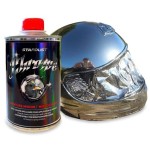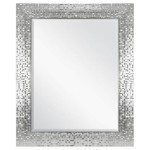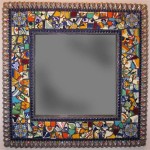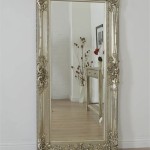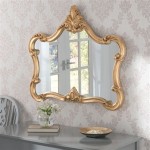DIY Free-Standing Full-Length Mirror
A full-length mirror is a valuable addition to any home, serving both functional and decorative purposes. While retail options abound, crafting a DIY free-standing full-length mirror offers a customizable and often budget-friendly alternative. This allows for control over size, style, and frame design, ensuring a perfect fit for individual needs and aesthetic preferences.
The core component of any free-standing full-length mirror is the mirror itself. Measuring the desired dimensions is the crucial first step. Mirror glass can be purchased from local glass suppliers or home improvement stores. Many retailers offer custom-cut services, ensuring a precise fit for the intended frame. When handling large pieces of mirror glass, safety precautions are paramount. Thick gloves and appropriate eye protection should be worn to minimize the risk of injury.
Selecting the appropriate frame material is the next consideration. Wood offers a classic and versatile option, adaptable to various staining and painting techniques. The dimensions of the wood should complement the mirror's size and intended placement. For a more rustic look, reclaimed wood can add character and a unique touch. Alternatively, more contemporary styles can be achieved with metal frames, utilizing materials like aluminum or steel. These materials offer durability and a sleek aesthetic.
The construction process begins with assembling the frame. For wooden frames, this typically involves joining four pieces of wood to create a rectangular frame. Wood glue and screws provide a strong and secure bond. Ensuring accurate measurements and square corners is essential for a stable and visually appealing final product. Metal frames might require welding or specialized connectors, depending on the chosen design.
Once the frame is assembled, the mirror can be secured. Specialized mirror adhesive, available at most hardware stores, is recommended. This adhesive is formulated to prevent damage to the mirror's reflective backing. Applying the adhesive evenly to the back of the frame ensures a secure and lasting bond. The mirror is then carefully placed onto the adhesive-coated frame and allowed to set according to the manufacturer's instructions.
Adding a backing to the mirror provides additional support and protects the reflective surface. A thin sheet of plywood or hardboard cut to the same dimensions as the frame is a suitable option. This backing can be attached to the frame using screws or adhesive. It also provides a clean and finished look to the back of the mirror.
Supporting the free-standing mirror requires a stable base. Several methods can achieve this. One approach involves attaching legs or feet to the bottom of the frame. These can be purchased pre-made or crafted from wood or metal scraps. Another method involves creating a stand from a separate piece of wood or metal, attaching it to the back of the frame with hinges. This allows the mirror to tilt, offering adjustable viewing angles.
Finishing touches enhance the overall appearance of the DIY free-standing full-length mirror. Wooden frames can be stained or painted to match existing décor. Sanding the wood beforehand creates a smooth surface for even application of the chosen finish. Metal frames can be polished or painted for desired effect. Adding decorative elements, such as molding or trim, can further personalize the design.
Safety considerations should be revisited throughout the entire process. Always wear appropriate safety gear, including eye protection and gloves. When working with power tools, follow manufacturer instructions carefully. Ensure the finished mirror is placed on a level surface to prevent tipping. Securing the mirror to the wall using appropriate hardware is highly recommended, especially in households with children or pets.
Placement of the finished mirror is another key element. Natural light sources enhance visibility and contribute to a brighter room. Placing the mirror near a window or in a well-lit area maximizes its functionality. Additionally, considering the surrounding décor ensures the mirror complements the overall aesthetic of the space.
Regular cleaning and maintenance preserve the mirror's appearance. Using a glass cleaner and a soft cloth prevents streaks and maintains reflectivity. Avoid using abrasive cleaners, which can scratch the mirror's surface. Inspecting the frame and stand periodically for any signs of wear or damage ensures long-term stability and safety.
Creating a DIY free-standing full-length mirror provides a rewarding and personalized experience. By carefully selecting materials, following construction best practices, and considering safety precautions, a functional and aesthetically pleasing addition to any home can be achieved. The possibilities for customization are endless, allowing crafters to express individual styles and create a unique piece that perfectly complements their living space.

Full Length Mirror Rogue Engineer

How To Build Large Floor Leaner Mirror Sawdust 2 Stitches

Diy Full Length Mirror With Storage Addicted 2

Full Length Mirror Rogue Engineer

From Master To Mastered Home Decor Rustic Mirrors

Transform Your Standing Mirror With These 11 Stunning Ideas Hometalk

Leaning Floor Mirror Diy Bower Power Flooring Home Decor

Diy Easel Mirror

12 Best Full Length Mirrors 2024 Affordable Long

Livingandhome Brown Rectangle Freestanding Full Length Mirror With Clothes Rack H 170 Cm X W 32 Diy At B Q

